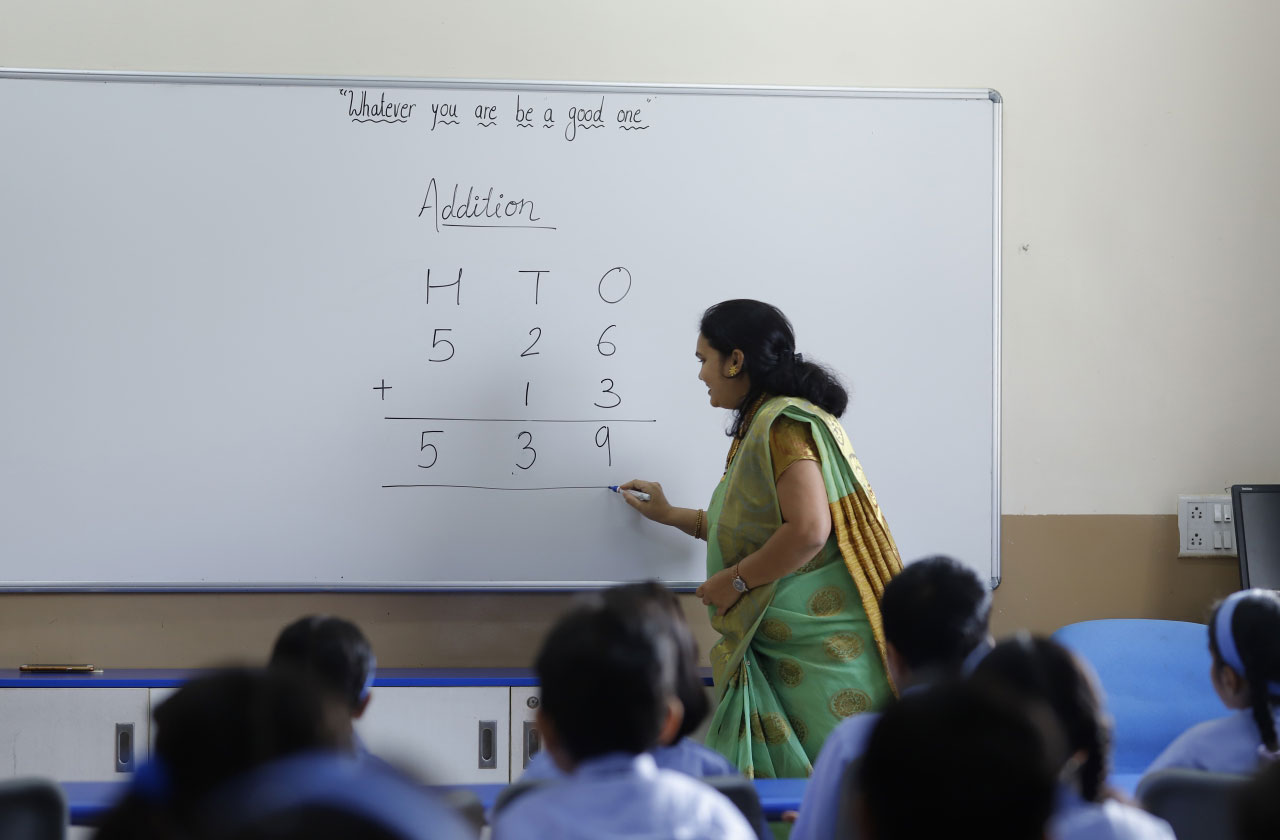All You Need to Know About Vedic Maths
At Podar International School, we believe in offering innovative and engaging educational experiences that go beyond traditional methods. Vedic Maths, an ancient system of mathematical techniques originating from the Vedas, aligns perfectly with our commitment to providing a holistic and forward-thinking education. Let’s delve into the fascinating world of Vedic Maths, offering insights into its origins, benefits, and how students, especially beginners, can embark on the journey of learning Vedic Maths.
Origins of Vedic Maths:
Vedic Maths traces its roots to the ancient Indian scriptures known as the Vedas, dating back thousands of years. Swami Bharati Krishna Tirtha rediscovered the system in the early 20th century and documented these mathematical principles in his book "Vedic Mathematics." The term "Vedic" is derived from the Sanskrit word "Veda," which means knowledge.
Core Principles of Vedic Maths:
Sutras:
The foundation of Vedic Maths lies in sixteen mathematical sutras, or formulas, extracted from the Vedas. These sutras serve as concise and efficient methods for solving various mathematical problems.
Ekadhikena Purvena:
This sutra translates to "By one more than the previous one." It simplifies the multiplication of numbers that differ by one.
Nikhilam Navatashcaramam Dashatah:
"All from 9 and the last from 10." This sutra aids in subtraction and complements, simplifying finding the difference between numbers.
Urdhva-Tiryagbhyam:
Known as the "Vertically and Crosswise" sutra, it facilitates the multiplication of numbers regardless of their size, promoting quick mental calculations.
Why should your child learn Vedic Maths?
Speed and Accuracy:
Vedic Maths is renowned for enhancing calculation speed and accuracy. The sutras provide shortcuts and mental tricks that allow students to solve problems swiftly.
Flexibility and Adaptability:
Vedic Maths offers multiple approaches to solving a single problem, allowing students to choose the method that resonates with them. This adaptability fosters a deeper understanding of mathematical concepts.
Boosts Mental Agility:
Learning Vedic Maths involves mental calculations and visualisation, promoting cognitive skills such as memory, concentration, and problem-solving.
Applicability Across Subjects:
The techniques learned in Vedic Maths are not confined to arithmetic. They can be applied to algebra, geometry, and other branches of mathematics, creating a holistic foundation for mathematical proficiency.
Reduces Math Anxiety:
Vedic Maths introduces an element of playfulness and simplicity to mathematics, reducing anxiety often associated with the subject. Students find joy in solving problems using these techniques.
Learning Vedic Maths for Beginners:
Understand the Basics:
Begin with a solid understanding of basic arithmetic operations. Familiarise yourself with addition, subtraction, multiplication, and division before delving into Vedic Maths sutras.
Mental Visualization:
Vedic Maths often involves mental visualisation of numbers and their relationships. Practice visualising numbers and operations in your mind to strengthen your mental calculation abilities.
Practice Regularly:
Consistent practice is vital to mastering Vedic Maths. Dedicate a specific time each day to practice different sutras and their applications. The more you practice, the more proficient you become.
Use Online Resources:
Leverage online resources, tutorials, and interactive platforms that offer guidance on learning Vedic Maths. These resources often include videos, practice exercises, and step-by-step explanations.
Examples of Vedic Maths Techniques:
Multiplication by 11:
To multiply a two-digit number by 11, add the digits and place the sum in the middle. For example, to multiply 23 by 11, add 2 and 3 to get 5 and place it between 2 and 3, resulting in 253.
Squaring Numbers Ending in 5:
To square a number ending in 5, multiply the digit at the tens place by itself plus 1 and append 25. For example, to square 25, multiply 2 by 3 (2 × 3 = 6) and append 25, resulting in 625.
Division by 9:
For quick division by 9, write down the quotient as the digit that, when added to the remainder, equals 9. For example, to divide 63 by 9, the quotient is 7 because 7 + 2 (rest) equals 9
Vedic Maths, with its ancient wisdom and innovative techniques, provides a unique approach to learning mathematics. At Podar International School, we recognise the transformative impact that Vedic Maths can have on a student's mathematical abilities. Students, especially beginners, can embark on an exciting journey of learning Vedic Maths by understanding its origins, benefits, and practical applications. As we continue to foster an innovative education environment, Vedic Maths stands as a testament to the timeless brilliance of ancient mathematical principles.
Topics

